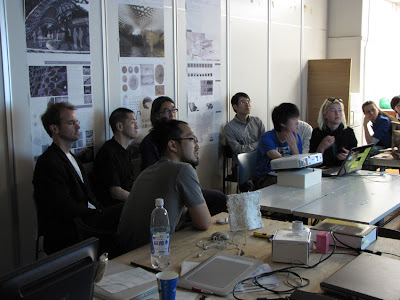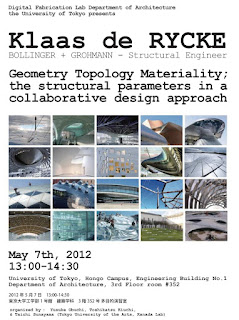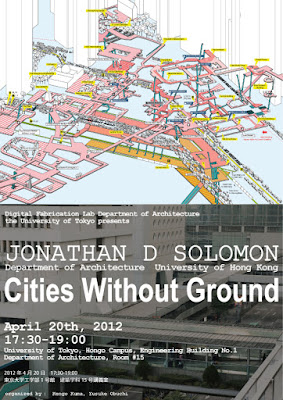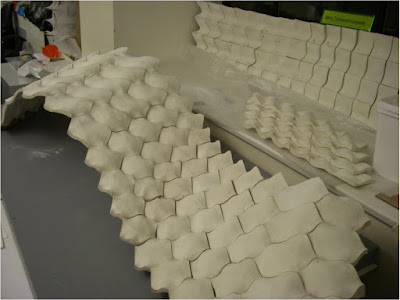The aim of the workshop was to design a low-tech fabrication system to produce customizable components based on repetitive mass-production logic. There is an increasing interest in nonstandard fabrication processes made it possible by various CNC equipment, whose price has came down significantly in recent years, however it is still limited in terms of its accessibility and affordability. In addition, in comparison to those produced by mass production processes, nonstandard fabrications have a tendency to produce quite a bit of waste as part of its process by carving, cutting, shaving, etc. to achieve one-off forms. Students are asked to design and to construct a low-tech customizable mass-production machine and to build a full-scale construct which explores structural/visual/functional potentials of complex geometry.
The aim of the workshop was to design a low-tech fabrication system to produce customizable components based on repetitive mass-production logic. There is an increasing interest in nonstandard fabrication processes made it possible by various CNC equipment, whose price has came down significantly in recent years, however it is still limited in terms of its accessibility and affordability. In addition, in comparison to those produced by mass production processes, nonstandard fabrications have a tendency to produce quite a bit of waste as part of its process by carving, cutting, shaving, etc. to achieve one-off forms. Students are asked to design and to construct a low-tech customizable mass-production machine and to build a full-scale construct which explores structural/visual/functional potentials of complex geometry.


















